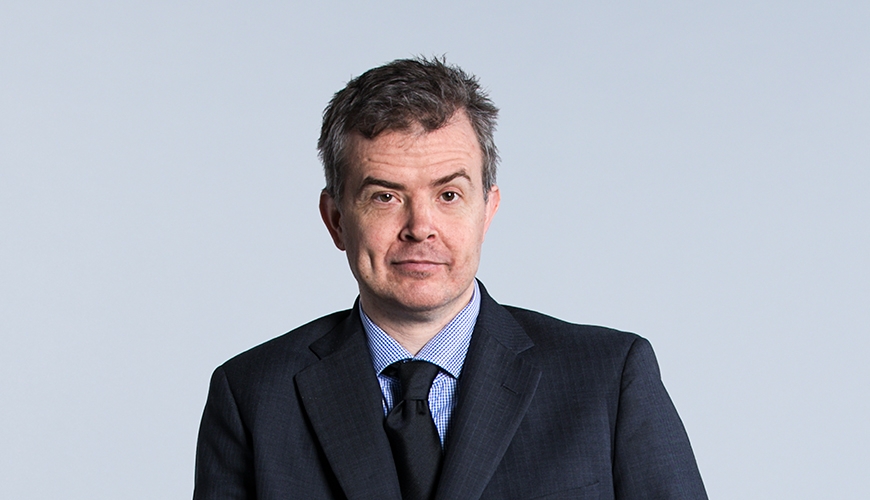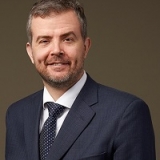COVID-19: Advancing Rights and Justice During a Pandemic

Columbia Law School Human Rights Institute
Virtual Event Series
May 7, 2020
Ben Gauntlett, Disability Discrimination Commissioner
Distinguished guests, ladies and gentlemen, fellow speakers. Thank you to Professor Emens for that kind introduction.
COVID-19 exacerbates disadvantage – but in doing so it highlights the importance of the Convention on the Rights of Persons with Disabilities (CRPD) and human rights more generally.
Post Covid-19 there will be a need to be equally vigilant to protect the rights of people with disability. This is done by including people with disability in the policy decision-making framework.
It is a pleasure to be asked to address you on COVID-19 and the rights of persons with disabilities. Although the global pandemic has led to a number of unfortunate consequences for people with disability, a pleasant consequence has been the use of technology to enable communication from remote areas. In this respect, to be presenting to you from Australia, in New York is, in a sense, a luxury and an honour and privilege.
Today in my remarks I wish to emphasise three points:
First, when we discuss “Awareness Raising” (Article 8 of the CRPD) and its importance we need to be especially mindful of the training we give government officials, health professionals, educators, media and first responders or emergency services personnel. This awareness is one of “rights” not just the existence of people with disability. Rights to make supported decisions; rights to accessible communication; rights to equitable access to healthcare and non-discrimination.
Second, the inclusion of people with disability in decision-making at the highest levels of government aids effective decision-making.
Third, when we discuss the right to health it cannot be divorced from the need to acknowledge the concept of reasonable accommodation and that there is a difference between formal equality and substantive equality. Medical ethicists can, on occasion, not be aware of the principles underlying the CRPD and Frailty Scales etc can be discriminatory. Issues concerning intersectionality need to be considered when discussing equality, particularly when essential services are concerned. Education on these issues needs to be ongoing.
To say that the global pandemic exacerbates discrimination and challenges faced by persons with disabilities is, in a sense obvious. But at the same time as exacerbating discrimination it highlights why reference to the social model of disability is so important. When laws, regulations, and policies are changed rapidly to suit global circumstances there is an overwhelming need to sometimes reflect upon what is occurring. Human rights exist to ensure that the dignity of all individuals is protected.
Today, I present to you an Australian perspective on the response of a first world country to COVID-19. It is important to note that compared to other countries Australia has had very few instances of COVID-19. This is, in part, I suspect consequence of geography but also a reflection of a relatively sophisticated healthcare regime. At last count, there were 6890 cases of COVID-19 in Australia of which 6035 had recovered, 759 were active and there were 96 deaths. Even on a per capita basis, there has thankfully been very few instances of COVID-19.
But while there have been very few instances of COVID-19, a policy response of federal and state government in Australia has been to impose quarantining, self-isolation and social distancing measures. This has meant that people with disabilities who are deemed “vulnerable” have been living in various levels of isolation for extended periods of time. Their services have been compromised, fear and anxiety has occurred (with increased risk of violence and abuse), and, in response to international events, questions have been asked about what should occur if a person with a disability enters into the hospital system and, more particularly intensive care.
These health policies have had a significant impact upon employment, education, housing, and provision of services in congregate settings or particularly group homes. Where services have had to adjust for people who have and who do not have a disability, such as in education, the need for accessible services has sometimes been overlooked. This has also applied for the provision of personal protective equipment. Isolation has been imposed on people rather than discussed as a need. Support for decision-making has not always been present.
But the word “vulnerable” has been used rather than “disability” until very recently. Policies for aged care were explicitly announced but disability was left silent. A press release was made rather than the issue of disability being referred to in a national press conference. Politicians have not explicitly engaged with the issue of disability and covid-19 in public settings but neither has the media. This lack of reference to “disability” is a global issue.
Until recently, when disability issues have been raised it has been in a piecemeal manner. In part, this is reflective of low levels of hospital admissions of people with disability with covid-19. But following significant advocacy from civil society changes are occurring.
In recognition of the significant impact of the pandemic on people with disability the Australian government established the Advisory Committee on Health Emergency Response to Coronavirus (COVID-19) for People with Disability (Advisory Committee) in early April 2020. The Advisory Committee advises the Chief Medical Officer, Professor Brendan Murphy and has people with disability on it. In my statutory role I sit on the Advisory Committee, which meets regularly. Perhaps, unsurprisingly, one of the earliest roles of the Advisory Committee is to devise a communications strategy.
The Australian Human Rights Commission has been tasked with drafting a health and human rights framework for people with disability to hopefully be used across Australia. Several resources are also being produced that will seek to ensure people with complex support needs, people with psychosocial or intellectual disabilities and people with communication disabilities are properly assisted in the health system. In a sense, flattening the curve has enabled this to occur.
It has also meant a mature discussion of what is reasonable accommodation in healthcare could and will take place. The issue is not resolved but the wheel is turning. Good healthcare practice accommodates all people and acknowledges the potential for bias – not just on the basis of disability but that can especially be the case when intersectionality is considered. Clinicians are starting to become aware of this issue and that previous notions of frailty are outdated.
In conclusion, as the health issues caused by COVID-19 dissipate the economic and social participation concerns for people with disability will arise.
In Australia, as in the rest of the world, a disability inclusive COVID-19 response and recovery strategy is good policy. It ensures no one is left behind now and in the future. But it is made with and not for people with disability.

